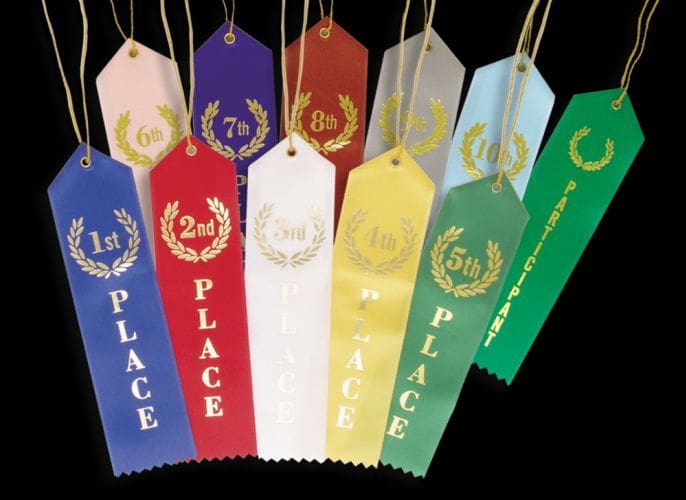
Some consumers may not be aware, but there are reasons for the colors of medals and ribbons.
Medals are produced in three colors, representing metals found in the periodic table of elements. Copper, silver and gold all appear in the same column of that chart, which means that they have similar chemical behaviors.
Copper(Cu) is the lighter element, more readily available (least rare) – is assigned to third place. Bronze, an alloy of mostly copper (up to 33% tin) is frequently used instead of copper.
Silver(Ag) is one level down the column, a little heavier and more rare than copper. It is assigned to second place.
Lastly, gold(Au) is the next level below silver on the column – the heaviest and most rare of the three metals. Gold is the color assigned to first place.
Ribbons
Ribbons are constructed from fabrics, and this enables a much larger color palette for them.
Blue is the color chosen for first place. Its history dates back to knights of the Cordon Bleu, who displayed blue riband on their armor. Then late in the 19th century, the Blue Riband was awarded to ocean liners who were fastest in crossing the Atlantic Ocean.

Red is the color assigned to second place.

White is assigned to third place.

Award ribbon color assignments vary from horse breeders to county fairs.
The stock award ribbon colors assigned for most competitions are:
1st – blue
2nd – red
3rd – white
4th – yellow
5th – green
6th – pink
7th – purple
8th – brown
9th – gray
10th – lt. blue
